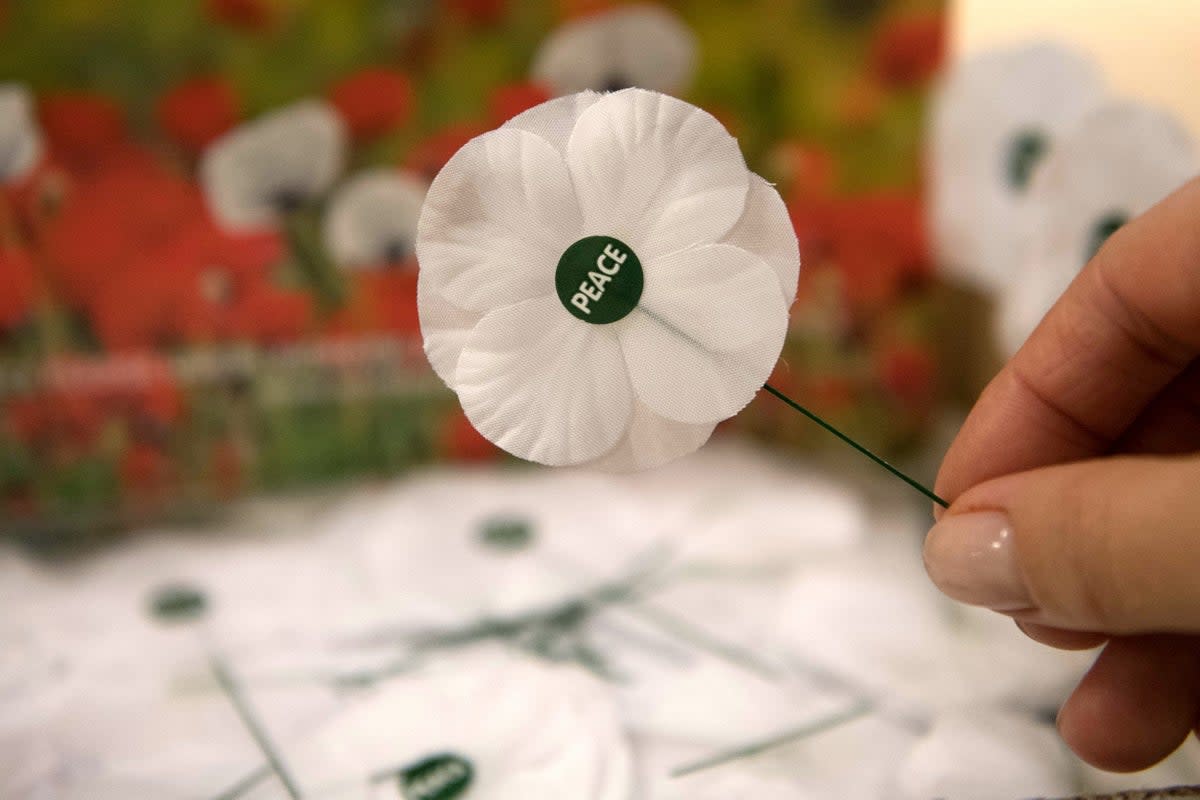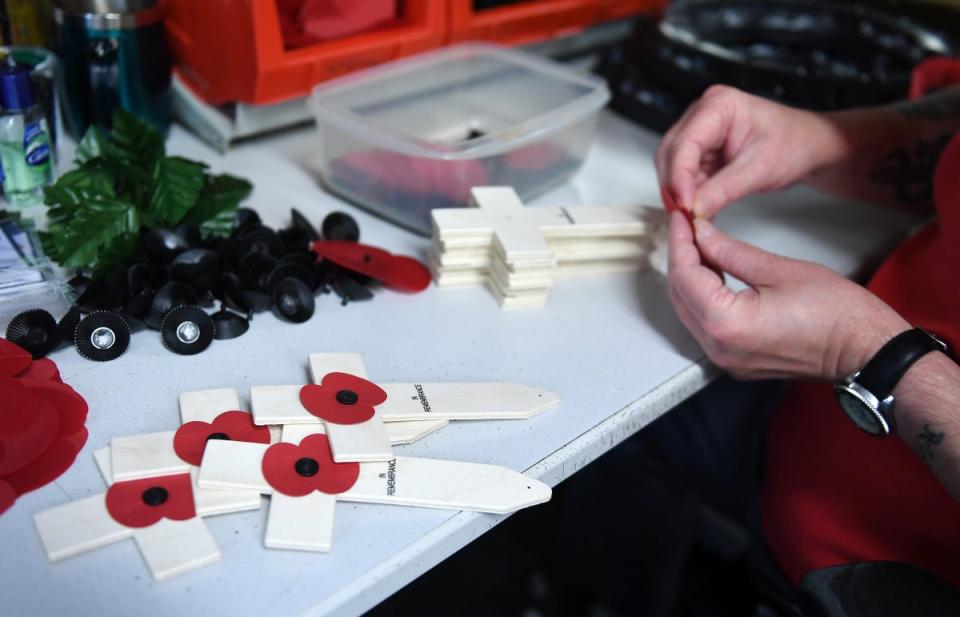Why do people wear red, white and purple poppies and what are their meanings?

This year's annual Poppy Appeal is set to begin, with more than 40 million paper flowers ready to be sold in honour of Remembrance Day.
Red poppies remain the Royal British Legion's most iconic symbol, yet recent years have seen a surge in popularity of white and purple varieties.
Remembrance Day will take place on Friday November 11.
The event commemorates the anniversary of the signing of the armistice in 1918, between the Allies and Germany, marking the end of the First World War.
The tradition dates back to 1919 and was first started by King George V.
But while many embrace the different variations, white poppies spark fierce controversy year after year.
So why are there different coloured poppies and why are some branded an insult? Here's everything you need to know:
Why do we have red poppies?

The Poppy Appeal was first launched in 1921 to help remember those who fought in the war.
The poppy was chosen because they grow in the fields of northern France and Belgium, where some of World War I's bloodiest battles took place.
The Royal British Legion, which started the Poppy Appeal, gives the money raised to the service men and women who are still alive and whose lives have been changed by war.
Poppies are distributed across the UK, including at supermarkets, train stations, shops, high streets and online.
However, some people choose not to wear them because they believe it has become a political tool to justify war.
News presenter Jon Snow famously refused to wear a poppy on air, citing an “unpleasant breed of poppy fascism”.
He added: “I respect our armed forces, the sacrifice and the loss, and like others, I remember them on Remembrance Sunday. That's the way it is. I won't be wearing a black tie for anyone's death – I don't for my own relatives, so why on earth would I for anyone else's?"
What do white poppies mean?
White poppies symbolise remembrance for all victims of war, commitment to peace and challenge the glamorisation of conflict, according to the Peace Pledge Union (PPU), which distributes them.
They were first introduced by the Co-operative Women’s Guild in 1933 to symbolise a message of “no more war" after WWI.
The white poppies are intended to remember all people killed in war, seeking to bring an end to “the exclusion of civilians from mainstream Remembrance events”.
About 100,000 white poppies have been sold every year since 2014, according to the PPU, and profits go “towards promoting peaceful alternatives to war, campaigning against militarism and our peace education work”.
White poppies are also worn in New Zealand for Anzac Day and Remembrance Day.
Why are white poppies controversial?
Every white poppy an insult.
— 🇬🇧✍️ 𝕋𝕠𝕟𝕪 𝕄𝕔ℕ𝕒𝕝𝕝𝕪 ✍️🇬🇧 (@Rogue_Gunner12) October 22, 2019
Some critics claim white poppies disrupt the underlying message of red poppies and, by association, Armistice Day.
In 2018, Conservative MP Johnny Mercer called them “attention-seeking rubbish" and people should “ignore" those who wear them.
In an impassioned tweet, he wrote: “If you don't want to wear a poppy don't bother, they fought and died so you could choose. But don't deliberately try and hijack its symbolism for your own ends."
The Royal British Legion says it “defends the right to wear different poppies" but that it will not sell other colours to avoid confusion.
It said that the red poppy “is a symbol of peace inclusive of all regardless of race, belief, origin, or sexual/gender identity.
"Remembrance is neutral on both causes and consequences of individual conflicts and is above partisan and political interpretation."
White poppies can be purchased through Peace Pledge Union.
What is the meaning of purple poppies?
#TheyAlsoServed 💜🐴💜 pic.twitter.com/5qd8G4E8y2
— Murphy's Army Purple Poppy Campaign (@MA_PurplePoppy) June 27, 2019
The less common purple poppies remember the animals killed in war.
It's estimated that 8 million horses and donkeys died in WWI.
Founder Andy Smith said: "As an animal charity, we strongly believe that animals lost whilst serving should be remembered.
"We want to acknowledge the sacrifices that they have made, and continue to make, and ensure they are not forgotten."
The purple poppy was replaced with a purple paw badge in 2015.
Animal Aid Director Andrew Tyler said of the decision: “Our aim was to make it clear that animals used in warfare are indeed victims, not heroes.
"They do not give their lives; their lives are taken from them. But too often the narrative promoted by the media has been one of animals as the valiant servants of people in violent conflict. This is precisely the opposite message to that which we intended.”
Purple paw badges can be purchased on Murphy’s Army.
What does the black poppy mean?
Black poppies commemorate the contributions of black, African and Carribean communities to the war effort, as servicepeople and civilians.
The charitable organisation was launched in 2010, and it aims to highlight “largely untold historical legacies” from the 16th century onwards.
When to stop wearing a poppy
There are a lot of conflicting views on how long to wear your poppy for.
Many people choose to stop wearing a Poppy after Armistice Day on November 11, as it is often laid at the base of the cenotaph after the Remembrance Day Ceremony.
You can wear a poppy anytime during the year as a sign of respect to those who lost their lives in war, according to the Royal British Legion.

 Yahoo News
Yahoo News 
